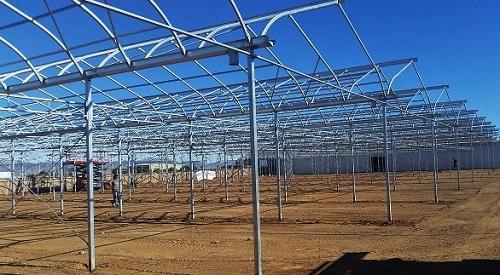Bruce Kennedy ~ WeedWorthy ~
The legalization of marijuana is not only taking the cannabis industry out of the shadows; it’s also moving it outdoors and into the sunshine.
As a growing number of states and municipalities legalize cannabis on some level, more professional marijuana growers are able to access agricultural technologies that previously might have brought some unwelcome attention from law enforcement.
One of the largest examples of the changes in the cannabis business sector is the current buzz about greenhouse usage. Many cannabis companies are seeing greenhouses as an energy-efficient, environmentally-friendly and financially sound alternatives to indoor warehouse grows.
In metro Denver, where recreational cannabis use has been legal for nearly two years, the marijuana industry has also pushed commercial real estate costs upward as more cannabis ventures look for available warehouse space.
And the electric bill for indoor, industrial cannabis growers can be astronomical. According to a recent article in Inc., Denver-based Medicine Man, which has a 60,000-square foot warehouse with 14 grow rooms, spends $40,000 per month on electricity.
The magazine also quotes, Jamie Perino, co-founder of Denver’s Euflora dispensaries, who noted her company’s utility bills were cut by one-half to two-thirds after its grow operation was moved to a 7,200-square foot greenhouse.
The legalization and industrialization of marijuana are the main reasons greenhouses are catching on, says Leigh Coulter, president of GGS Structures Inc. in Ontario, Canada.“It’s pretty hard to have a (cannabis) greenhouse that’s an acre in size if it’s an illegal crop,” she tells WeedWorthy.
GGS specializes in structures ranging from 1,000-square feet to over 25 acres. It works with vegetable and flower growers, as well as agricultural nurseries and specialized plant research facilities all over the world. It’s also been supplying its structures and products to legal cannabis growers in Canada since around 2001.
Coulter says while many legal cannabis growers bring their own, hard-fought experience to the table, they also have to adapt to the demands of a rapidly-growing industry. And that, she says, has brought the long-term cannabis growers and activists into the same room with commercial agriculture people.
“So it’s really about trying to merge two different sets of knowledge to find the best way to move forward,” she notes, “and that’s kind of what we do. We listen well to the veteran growers who have the knowledge, who have been growing the plant, and we provide information on commercial, scalable production and technology that they might not be aware exists. And then we work together to see how that can work with how they grow.”
Michael Camplin, GGS’ sales manager, says that while cannabis crops may have some specific needs, many of those requirements are similar to other crops grown in greenhouses.
“When we made a decision to really focus on (cannabis) as a separate division in our company, we learned everything there is to learn about the growing of cannabis crop,” he says. “So there are some adaptations but it’s not really anything new.”
As an example, Camplin points to the light deprivations systems needed to optimize cannabis flower growth. “There’s all kinds of floral crops that need exactly the same thing,” he adds, “and we’ve been using that in greenhouses for many years.”
At the same time, says Coulter, the legal marijuana industry is evolving rapidly and having to deal with some constantly-changing issues, such as local regulations regarding cannabis grows.
“Everybody just has to keep their ears and eyes open and learn, and that’s why I think greenhouses are becoming a popular thing,” she says.“As time goes by, the cream should rise to the top,” she continues. “Those that really understand and know how to grow the plant, and are considerate of their customers -- want to do it right -- they’re going to be in a position to add a lot of technology that they really couldn’t access in the past, and that will make them better and stronger.”





